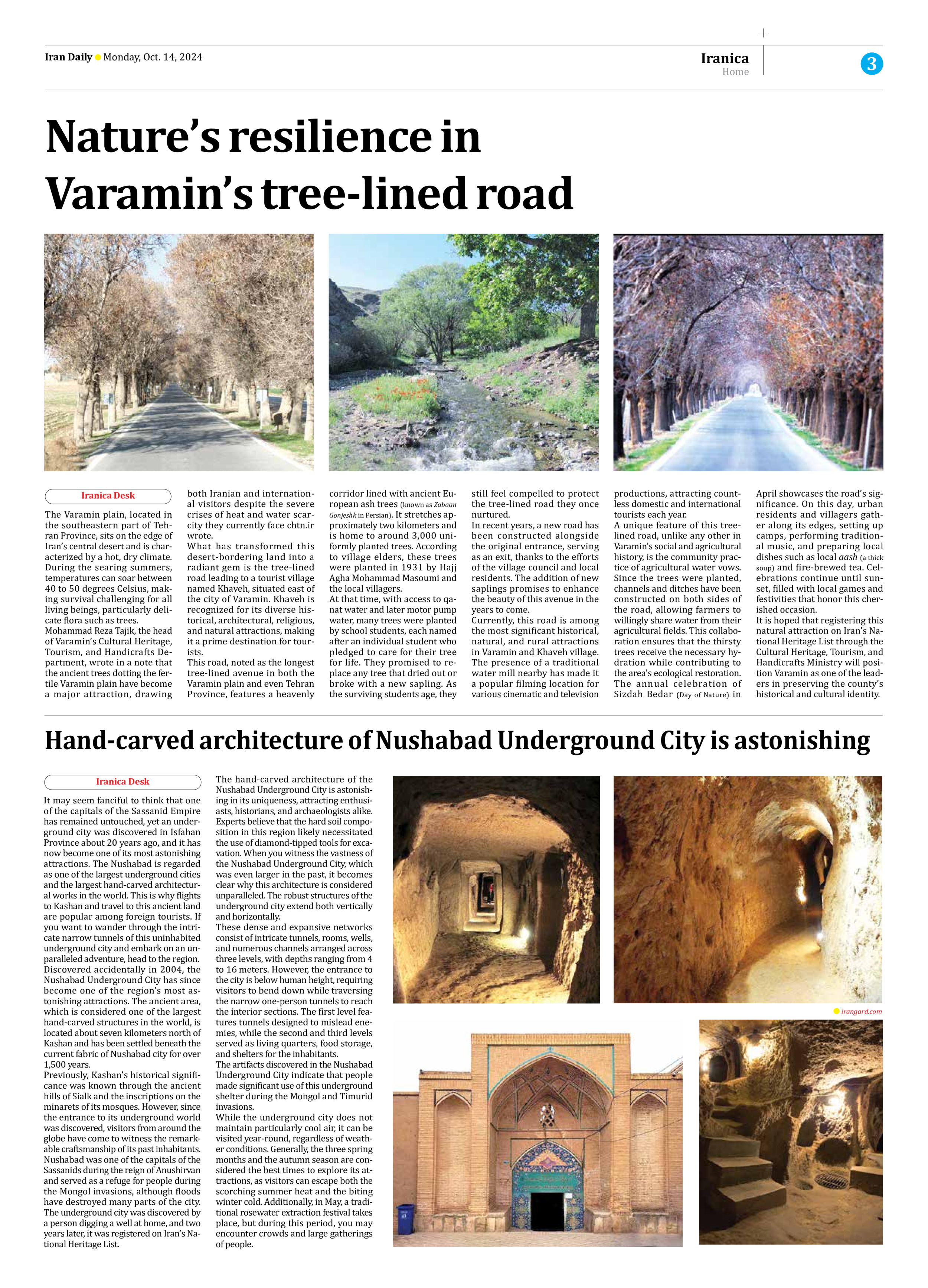
Hand-carved architecture of Nushabad Underground City is astonishing
It may seem fanciful to think that one of the capitals of the Sassanid Empire has remained untouched, yet an underground city was discovered in Isfahan Province about 20 years ago, and it has now become one of its most astonishing attractions. The Nushabad is regarded as one of the largest underground cities and the largest hand-carved architectural works in the world. This is why flights to Kashan and travel to this ancient land are popular among foreign tourists. If you want to wander through the intricate narrow tunnels of this uninhabited underground city and embark on an unparalleled adventure, head to the region.
Discovered accidentally in 2004, the Nushabad Underground City has since become one of the region’s most astonishing attractions. The ancient area, which is considered one of the largest hand-carved structures in the world, is located about seven kilometers north of Kashan and has been settled beneath the current fabric of Nushabad city for over 1,500 years.
Previously, Kashan’s historical significance was known through the ancient hills of Sialk and the inscriptions on the minarets of its mosques. However, since the entrance to its underground world was discovered, visitors from around the globe have come to witness the remarkable craftsmanship of its past inhabitants.
Nushabad was one of the capitals of the Sassanids during the reign of Anushirvan and served as a refuge for people during the Mongol invasions, although floods have destroyed many parts of the city. The underground city was discovered by a person digging a well at home, and two years later, it was registered on Iran’s National Heritage List.
The hand-carved architecture of the Nushabad Underground City is astonishing in its uniqueness, attracting enthusiasts, historians, and archaeologists alike. Experts believe that the hard soil composition in this region likely necessitated the use of diamond-tipped tools for excavation. When you witness the vastness of the Nushabad Underground City, which was even larger in the past, it becomes clear why this architecture is considered unparalleled. The robust structures of the underground city extend both vertically and horizontally.
These dense and expansive networks consist of intricate tunnels, rooms, wells, and numerous channels arranged across three levels, with depths ranging from 4 to 16 meters. However, the entrance to the city is below human height, requiring visitors to bend down while traversing the narrow one-person tunnels to reach the interior sections. The first level features tunnels designed to mislead enemies, while the second and third levels served as living quarters, food storage, and shelters for the inhabitants.
The artifacts discovered in the Nushabad Underground City indicate that people made significant use of this underground shelter during the Mongol and Timurid invasions.
While the underground city does not maintain particularly cool air, it can be visited year-round, regardless of weather conditions. Generally, the three spring months and the autumn season are considered the best times to explore its attractions, as visitors can escape both the scorching summer heat and the biting winter cold. Additionally, in May, a traditional rosewater extraction festival takes place, but during this period, you may encounter crowds and large gatherings of people.







